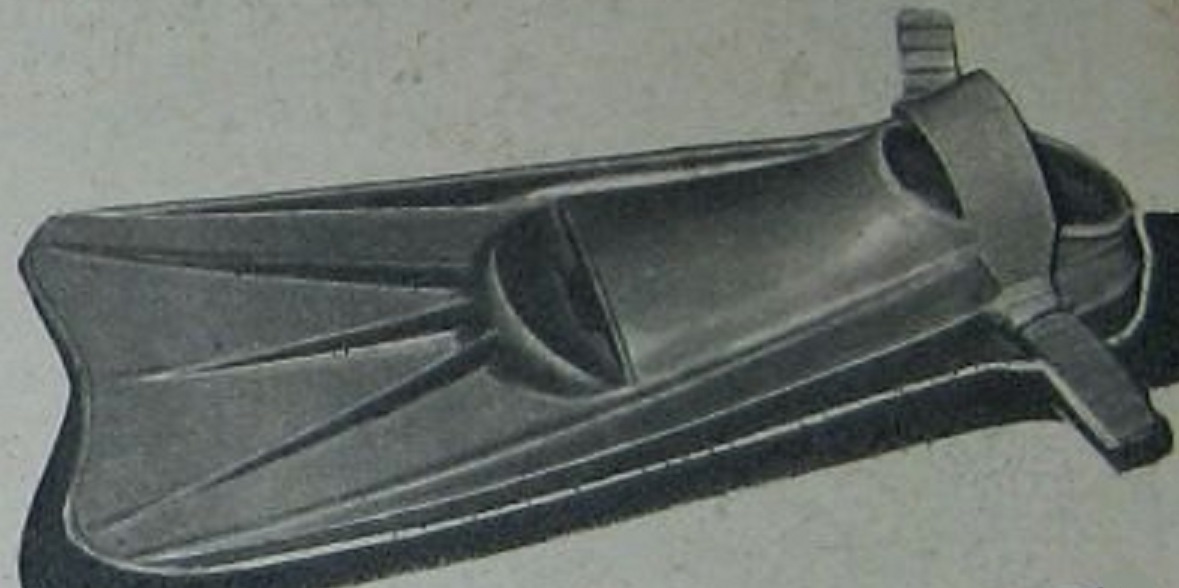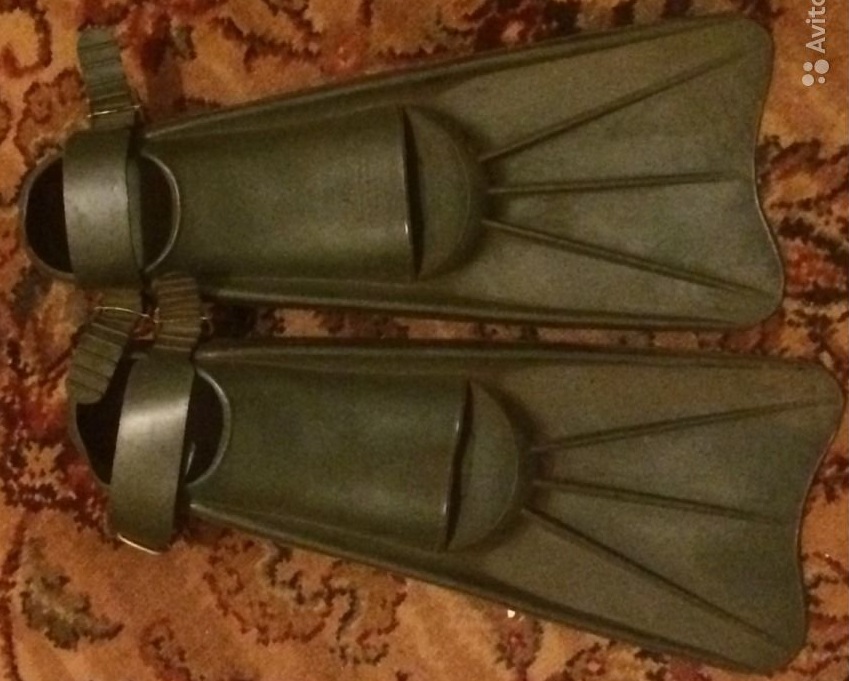|
|
Post by DavidRitchieWilson on Sept 3, 2022 9:24:18 GMT -8
I recently came across a couple of record cards released for publication by the American Central Intelligence Agency and posted online at Approved for release. The cards summarise the contents of an April 1959 Soviet technology magazine article about a sporting goods plant in Moscow known as "Moscow Rubber Goods Factory No. 4". This plant was called "Mosrezina" for short, derived from the first three letters of "Moskva" (Russian for "Moscow") and the word "rezina" (Russian for "rubber"). The image accompanying my post shows the record cards on the right. You can access them directly online at www.cia.gov/readingroom/docs/CIA-RDP86-00513R000200030004-2.pdf. On the left, you will find the portion of the article dedicated to fins, masks and snorkels, which were a completely new product line for the sporting goods factory back then. I have provided a parallel translation of the original Russian text. Please tell me if you know the language and I have made any blatant translation errors. My own knowledge of Russian derives from a single year of weekly evening classes back in the mid-1960s and a two-week student tourist visit to Moscow and to what was then Leningrad during the early 1970s. The full Russian-language article can be accessed online at zhurnalko.net/=nauka-i-tehnika/tehnika-molodezhi/1959-04. While the optimism of this article written by the sporting goods plant director is palpable, it is possible to read between the lines and to discern the limitations of the enterprise. For example, the illustrated full-foot fins (later simply known as "Model No. 3") are described as "one size fits all", which we now know is never really true of closed-heel fins, however well the instep straps and the toe openings work! DRW |
|
|
|
Post by DavidRitchieWilson on Sept 5, 2022 4:28:25 GMT -8
I thought my original image of the two documents might have had a lower resolution than is desirable, so I have extracted the English text and reproduced it here. The CIA Release Berdichevskiy, Ye., Director of the Rubber-ware Factory No. 4
An Enterprise for Sportsmen (Zavod - sportsmenan)
Tekhnika molodezhi, 1959, Nr 4, pp 18 - 19 (USSR) In an introduction of the present article, some opinions on the Rubber-ware Factory No. 4 "Mosrezina" are published. The gluer (kleyshchitsa) Klavdiya Yegorova: “Our factory is the only one of its kind and extremely necessary for sportsmen. We endeavor to support the honor of Soviet sports”. Antonina Mun: "Recently, we produced the latest shoe models for the basket-ball selection team which went to Chili". State tennis coach Bel’yayev said in conversation with the head of the gluing workshop, "Your enterprise is our hope and support. The sports equipment of our country must finally become better than foreign products". Furthermore, the report of the author is given. In the Rubber-ware Factory No. 4 above all sports shoes, basketball, football, and training shoes for athletics are produced. World champion V. Kuts, the meritorious sports champion F. Vanin et al. participated in the elaboration of shoe models for long distance runners. The demand in rubber shoes is steadily increasing. According to this fact, a new assembly line was put into operation in this factory, which makes possible a 15-20% raise of production. Apart from shoes also various sports equipment is produced. Among them tyres for racing cycles, the weight of which could be successfully reduced from 420g to 270g. Moreover, rubber disci are produced indoor training. Also goggles for skiers and motorcyclists are produced in the factory. Special jumping ropes, which may be recommended to every sportsman, are produced on the basis of the design by coach Sobinov. For water sports, fins, two types of masks and breathing apparatus are produced. In 1959, 25000 to 30000 sets will be produced. There are 4 figures.
THE DIVING GEAR SECTION OF THE SOVIET MAGAZINE ARTICLE
UNDERWATER SPORTSMAN'S EQUIPMENT Recently, underwater swimming and underwater hunting have become very popular all over the world. The great variety of rivers, lakes, coastal seas and vast artificial reservoirs create huge opportunities for the development of underwater sports in our country. This is why the demand for swimming products is increasing day by day. Our factory has developed and mastered production of rubber fins, masks and breathing tubes for underwater sportsmen. These fins fit any foot size. Fins are extremely useful in conventional swimming too, freeing the swimmer’s hands from swimming movements and enabling him to stay on the surface of the water and to develop high speed. They are made of coloured rubber with a specific gravity of no more than 0.98. They must be resilient enough, however, to provide a good push against the water. The first model fins met these conditions, but had one flaw: they were not elastic enough, making it difficult for a swimmer to regulate the movement of his body in the water and to develop sufficient speed. One fin produced by our plant is a more elastic rubber model with additional ribs for reinforcement. If the work surface area is correctly calculated, tapering gradually in thickness, the most effective results are achieved in swimming. The fins come in different foot fittings, from size 36 to 41. The latest model fins have the sort of blades that bend at an angle. The support area increases at the point of repulsion; the streamlining of the fins improves when the foot moves freely. The rubber shoe has a toe hole to fit any foot size and a buckled rubber strap goes over the instep. The rubber sole allows you to move confidently both on the beach and on the sea floor. The toe rest increases blade hardness and eases fin use. This model is particularly suitable for mask or scuba diving and for underwater hunting.  You will not hunt for long without a rubber mask and a tube with a mouthpiece. A mask is the second component of the underwater sportsman’s equipment, enabling the swimmer to see underwater. It consists of a coloured rubber body and a rubber strap. Inserted in the front of the body is a viewing window: a porthole. The porthole is made of silicate, inorganic glass, because experience has shown that organic glass quickly fogs up in water. The mask is available in two shapes — oval and cylindrical — and in two sizes of viewing window. The rubber is high-grade natural rubber. The joint between the window and the body provides the mask with a leaktight seal. The mask edges adjacent to the face taper off, ensuring a better seal — "sucking" onto the face. A breathing tube enables a sportsman to swim face down on the surface of the water, breathing freely without raising his head. This position increases body buoyancy, saves energy and, most importantly, enables the swimmer to dive, hunt or photograph the underwater world. The device produced by the plant consists of a tube and a mouthpiece. The (anodised) Duralumin tube is 40 cm in length and has a special curvature to reach the surface. Its inner diameter is 16 mm. The food-grade rubber mouthpiece has a curved, horseshoe shape. At one end is a guard for the teeth and lips. The presence of an outer rubber covering for the lips to stop water entering enables the mouthpiece to be used for scuba diving too. In 1959, the plant will produce 30,000 sets of fins, masks and breathing tubes.
DRW
|
|
|
|
Post by DavidRitchieWilson on Sept 5, 2022 4:41:19 GMT -8
And here are auction images of the basic equipment showcased in the Mosrezina article. Model 3 Fins Type I/II Mask J-shaped Snorkel DRW |
|








